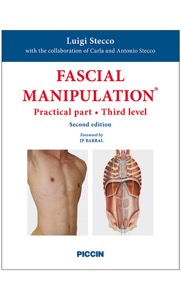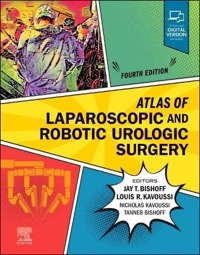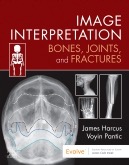Fascial Manipulation - Practical Part - Third Level
di Stecco • 2023 • dettagli prodotto
normalmente disponibile
per la spedizione in 5-7 giorni lavorativi
da
a
€ 52,25

DESCRIZIONE
I was more than happy to write this foreword to “Fascial Manipulation for Internal Dysfunctions” by Luigi Stecco, because I have always encouraged manual therapies dealing with internal dysfunctions.
My enthusiasm derives from the extraordinary results I obtain using “Visceral Manipulation”, the method I have developed from my experiences as an osteopath. In recent years, many scholars have shifted their attention from the organs to their surrounding fasciae, but this is the first book to provide an overview of all the internal fasciae.
Furthermore, it proposes a biomechanical model that defines the specific relations between organs, fasciae and musculoskeletal system, and it is supported by beautiful images of dissection that help to comprehend these relations.
This book examines all facets of the fascia, showing how this is the only tissue of the human body that modifies its consistency when under stress (plasticity), yet it is capable of regaining its elasticity when subjected to manipulation (malleability) I particularly appreciate the concept of the tensile structures that explains perfectly how different trunk cavities can interact with the internal organs.
In fact, the fasciae of the trunk are arranged according to the principles of tensile structures, allowing for ample trunk movements without interfering with internal organ function. This concept effectively shifts the therapist’s attention from the organ itself to its ‘container’, and treatment can then focus on recreating a suitable environment within which the organs can move according to their physiological rhythms.
In our books, we have always sustained the importance of the mobility and motility of the internal organs. Now, this book by Stecco maintains the guiding principles of the fasciae, but it extends it further, to include the apparatus and systems. Initially, the reader may be somewhat disconcerted by the numerous different manual approaches that are proposed. However, once these approaches have been studied it will be comprehensible that they are all useful for the treatment of the clinical variations that any single patient may present.
Based on these considerations, one can understand that this manual by Stecco represents a useful guide for all therapists interested in treating internal dysfunctions without the use of medications (such as antacids, pain killers, antispasmodics, etc.), which can often mask the signs and symptoms expressed by the human body.Last, I would like to underline the clarity with which Stecco has described the autonomic system and its affiliations with the internal fasciae. Seen in this light, the autonomic system no longer represents an incomprehensible chaos. Moreover, it becomes a sort of peripheral brain, regulating the functions of the different organs perfectly, thanks to its interactions with the visceral fasciae.
I sincerely hope that therapists, medical doctors, osteopaths, chiropractors and researchers will take the proposals presented in this book into consideration, both in order to realise the potential our hands possess to cure many internal dysfunctions, as well as to ascertain the validity of these ideas.
‘Fascial Manipulation for Internal Dysfunctions’ certainly provides a simple but effective biomechanical model for guiding the therapist’s hand in unravelling the chaos of fascial anatomy. To quote the Fascial Manipulation motto: manus sapiens potens est - a knowledgeable hand is potent.
DETTAGLI PRODOTTO torna su
ISBN: 9788829933488
Titolo: Fascial Manipulation - Practical Part - Third Level
Autori: Stecco
Editore: Piccin
Volume: Unico
Edizione: II 2023
Lingua: Inglese
Finitura: Copertina flessibile
Misure: 19,5x28,5 cm
Pagine: 232
Peso: 0.6 kg
RECENSIONI
NESSUNA RECENSIONE PER QUESTO PRODOTTO








































